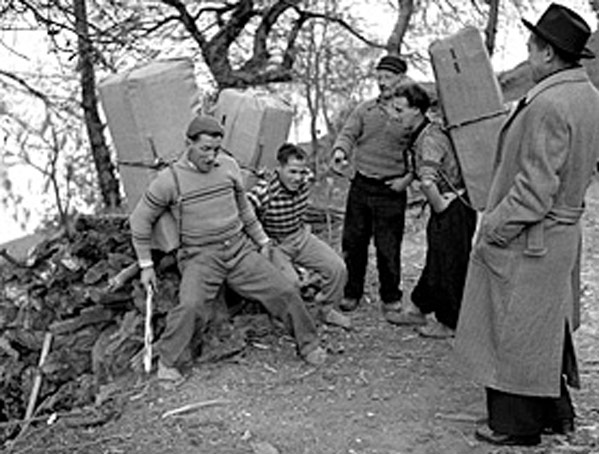Contraband comes from “contra bannum”, i.e. against the law. Smuggling refers to goods that pass the border illegally, without paying customs duties. Smuggling was already present in past centuries and intensified with the advent of the kingdom of Italy and the establishment of state monopolies in Italy.
During World War I, the difficulty of obtaining food in Switzerland led to a flow of contraband from Italy to Switzerland.
Switzerland’s difficulties with food supplies, which started in 1943, required Italy to provide large quantities of rice. The flow towards Italy brought coffee, tobacco and salt.
During World War I, the difficulty of obtaining food in Switzerland led to a flow of contraband from Italy to Switzerland.
Switzerland’s difficulties with food supplies, which started in 1943, required Italy to provide large quantities of rice. The flow towards Italy brought coffee, tobacco and salt.
Because of its geographical location and the lack of other income, smuggling has been a major part of local life in our region in the Val Cavargna, near the Swiss border.
The route the smugglers would take went up the Matterone and then inside the “Belarma” following a path along the steep slope above Lake Lugano.

The period between the 1950s and the 1970 marked a change and the “spalloni” smugglers who used to cross the border with “bricolla” packs became a figure of the past. Smuggling uses other means and other borders.
In-depth accounts of smuggling can be found at the Customs Museum at “Cantine di Gandria”.









